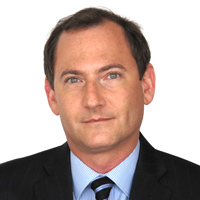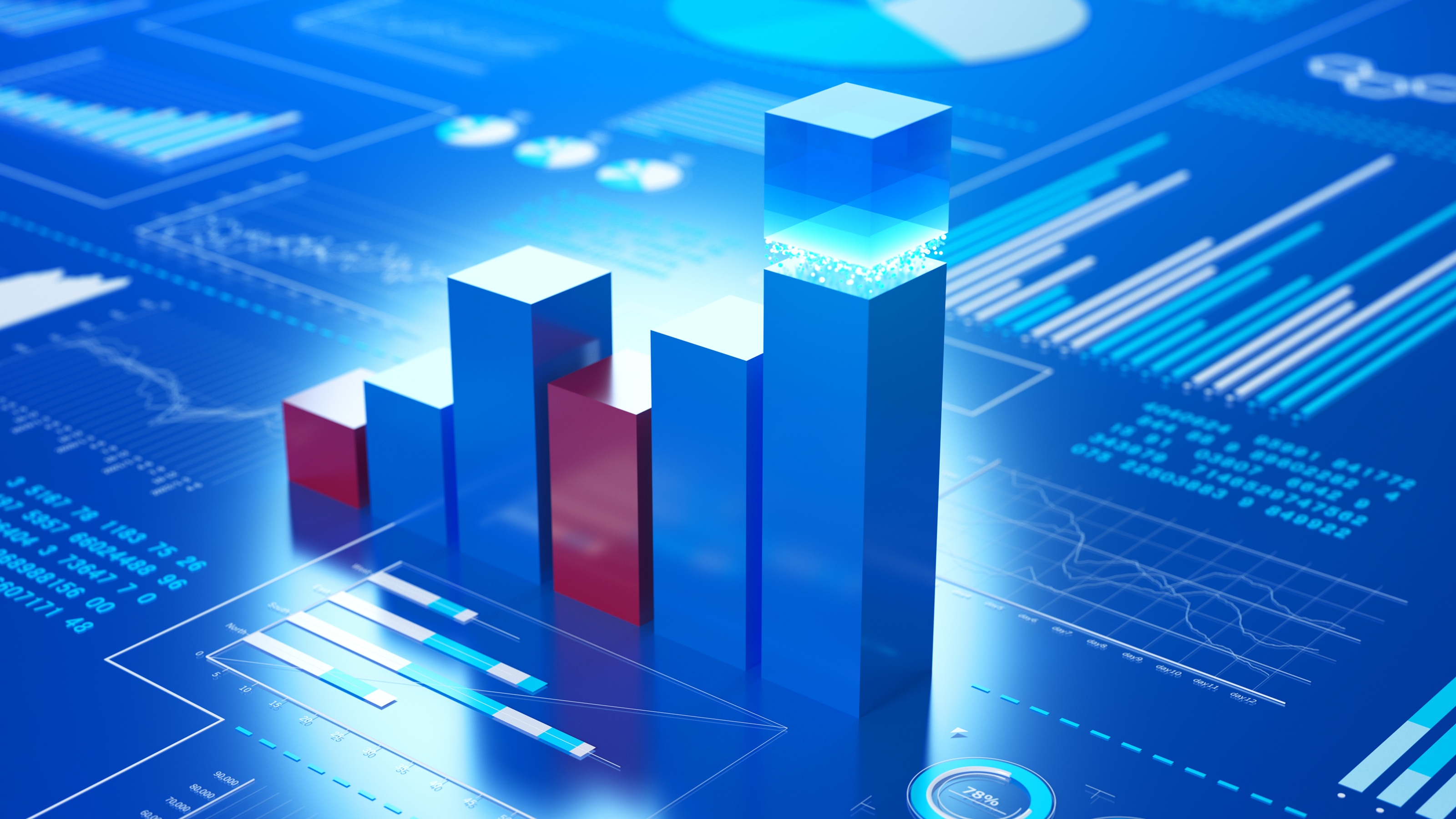What Will the Fed Do at Its Next Meeting?
The Federal Reserve is set to resume its rate-cutting cycle at the next Fed meeting.


The Federal Reserve is set to lower rates at the next Fed meeting, as concerns about a softening labor market take precedence over sticky inflation, experts say.
The Federal Open Market Committee (FOMC) began its rate-cutting cycle a year ago with a surprise reduction of 50 basis points (50 bps), or half a percentage point, but it's been on hold since December.
A solid labor market and the impact on prices from tariffs have made the FOMC leery of lowering borrowing costs. But a slowdown in hiring and a large downward revision to previous employment data have both economists and the market expecting more dovish monetary policy going forward.
From just $107.88 $24.99 for Kiplinger Personal Finance
Become a smarter, better informed investor. Subscribe from just $107.88 $24.99, plus get up to 4 Special Issues

Sign up for Kiplinger’s Free Newsletters
Profit and prosper with the best of expert advice on investing, taxes, retirement, personal finance and more - straight to your e-mail.
Profit and prosper with the best of expert advice - straight to your e-mail.
Importantly, the next Fed meeting will also include a Summary of Economic Projections (SEP), also known as the dot plot, which the FOMC releases four times a year.
"This quarterly update offers the Fed’s latest forecasts for GDP growth, unemployment, inflation, and the federal funds rate, providing a window into how policymakers interpret recent economic developments," writes Giampiero Fuentes, economist at Raymond James. "With most tariffs now fully implemented and imports actively taxed, the SEP will likely reflect updated economic projections."
To recap: The FOMC has held the federal funds target rate steady at 4.25% to 4.50% since its December meeting. It left rates unchanged in July, citing sticky inflation, tariff effects and, as always, the need for more data.
As of this writing, market participants expect the Fed to cut short-term rates by 25 basis points (a quarter of a percentage point) three times before year-end, with the first reduction coming later this week.
Indeed, as of September 15, interest rate traders assigned a 96% probability to a quarter-point cut at the next Fed meeting, according to CME Group's FedWatch. That's up from 85% a month ago.
Odds of additional quarter-point reductions at the October and December meetings stood at 74% and 69%, respectively.
With the Fed set to ease at an increasingly complex time, we turned to economists, strategists and other experts for their thoughts on monetary policy going forward. Please see a selection of their commentary, sometimes edited for brevity or clarity, below.
Fed rate cuts: what the experts say

"We expect a 25 bp rate cut at the September FOMC meeting to be the first of three this year. The increase in the unemployment rate over the last two months and the decline in job growth to below the breakeven rate make supporting the labor market the Fed's top priority. We expect 25 bp cuts in September, October and December and two more next year to 3.0% to 3.25%. We do not expect the FOMC statement to nod toward an October cut, but Chair Powell might hint softly at consecutive cuts in his press conference." – David Mericle, Chief U.S. Economist at Goldman Sachs
"We look for the FOMC to cut policy rates by 25 bps. This will resume the rate reduction campaign commenced last September which has been on hold this year. In the Summary of Economic Projections and the 'dot plot,' we look for the median fed funds forecast to show a second quarter-point rate cut for this year (so two in total for 2025, which was the case in June's SEP) and probably three moves for next year (it was only one before). In the press conference, we suspect Powell will spend time explaining why the Fed sided with the output/employment team in this policy tug-of-war." – Michael Gregory, Deputy Chief Economist at BMO Capital Markets
"The Fed has telegraphed a 25 bp cut at its September meeting. Markets will look to the SEP and press conference to assess the pace and extent of cuts going forward. The macro forecasts in the SEP should look very similar to June. We think the 2025 and 2026 median dots will show 50 bps of cuts each. Risks are for 75 bps in 2025. Powell's characterization of the labor slowdown (cyclical or structural?) and inflation (one-off or sticky?) should provide clues on his expected policy path." – Aditya Bhave, U.S. Economist at BofA Global Research
"The focus in this meeting is going to be less on the decision and more the path forward. The SEP and dot plot will be the market's anchor. Given how much dovishness is already priced, any median path that signals fewer cuts or a slower easing cycle in 2026 would read as hawkish. A split vote or dissent (for 50 bps or even a hold) would underscore internal debate and lift uncertainty around the rate trajectory. And with positioning primed for a steady easing cycle, even a neutral press conference from Chair Powell could disappoint markets and nudge equities toward a dovish-to-neutral repricing." – Daniela Sabin Hathorn, Senior Market Analyst at Capital.com
"Comerica forecasts a quarter-percentage point cut at Wednesday's Fed decision. The Fed can be expected to cut rates further in coming months; the question is how much, not if. If Powell reiterates the 'proceed carefully' language he used at Jackson Hole in the post-meeting press conference, it will signal that he favors a pause in rate cuts at the October decision (barring further deterioration in the economic data). It will be worth watching for a gap between the FOMC statement's guidance, which represents the consensus view of all FOMC members, and Chair Powell's own statements in the press conference, which reflect his personal view." – Bill Adams, Chief Economist at Comerica Bank
"The broad-based rise in consumer prices complicates the Fed's policy outlook. Persistent inflation risks may limit the Fed's ability to pursue aggressive rate cuts. Despite this, we continue to expect a 25 basis point rate cut in September, with at least one additional cut likely before year-end. A larger 50 basis point cut appears increasingly unlikely unless Fed officials perceive a significant recession risk." – Eugenio Alemán, Chief Economist at Raymond James
"With the weakening labor market and inflation seemingly under control, we expect a rate cut starting this week and totaling 100 basis points over the next four meetings through January 2026. The Fed now is looking at a significantly softening labor market as a key concern and priority. The stock market's recent gains are being driven by strong earnings momentum and declining rates as the market starts to price-in the Federal Reserve's expected rate cuts. Just because stocks are at record highs, does not mean a pullback is imminent." – Brian Buetel, Managing Director at UBS Wealth Management
"A 25 bp easing this week is highly likely, but the vote probably will be split three ways. Committee members are still divided on whether rising inflation or unemployment is the bigger risk. That discord will rule out clear guidance on future easing, though markets will still price-in a big shift." – Samuel Tombs, Chief U.S. Economist at Pantheon Macroeconomics
Related Content
Profit and prosper with the best of Kiplinger's advice on investing, taxes, retirement, personal finance and much more. Delivered daily. Enter your email in the box and click Sign Me Up.

Dan Burrows is Kiplinger's senior investing writer, having joined the publication full time in 2016.
A long-time financial journalist, Dan is a veteran of MarketWatch, CBS MoneyWatch, SmartMoney, InvestorPlace, DailyFinance and other tier 1 national publications. He has written for The Wall Street Journal, Bloomberg and Consumer Reports and his stories have appeared in the New York Daily News, the San Jose Mercury News and Investor's Business Daily, among many other outlets. As a senior writer at AOL's DailyFinance, Dan reported market news from the floor of the New York Stock Exchange.
Once upon a time – before his days as a financial reporter and assistant financial editor at legendary fashion trade paper Women's Wear Daily – Dan worked for Spy magazine, scribbled away at Time Inc. and contributed to Maxim magazine back when lad mags were a thing. He's also written for Esquire magazine's Dubious Achievements Awards.
In his current role at Kiplinger, Dan writes about markets and macroeconomics.
Dan holds a bachelor's degree from Oberlin College and a master's degree from Columbia University.
Disclosure: Dan does not trade individual stocks or securities. He is eternally long the U.S equity market, primarily through tax-advantaged accounts.
-
 December Fed Meeting: Live Updates and Commentary
December Fed Meeting: Live Updates and CommentaryThe December Fed meeting is one of the last key economic events of 2025, with Wall Street closely watching what Chair Powell & Co. will do about interest rates.
-
 This Is Why Investors Shouldn't Romanticize Bitcoin
This Is Why Investors Shouldn't Romanticize BitcoinInvestors should treat bitcoin as the high-risk asset it is. A look at the data indicates a small portfolio allocation for most investors would be the safest.
-
 I'm a Federal Benefits Pro: I Answer These 2 Questions a Lot
I'm a Federal Benefits Pro: I Answer These 2 Questions a LotMany federal employees ask about rolling a TSP into an IRA and parsing options for survivor benefits, both especially critical topics.
-
 December Fed Meeting: Live Updates and Commentary
December Fed Meeting: Live Updates and CommentaryThe December Fed meeting is one of the last key economic events of 2025, with Wall Street closely watching what Chair Powell & Co. will do about interest rates.
-
 Why Investors Shouldn't Romanticize Bitcoin, From a Financial Planner
Why Investors Shouldn't Romanticize Bitcoin, From a Financial PlannerInvestors should treat bitcoin as the high-risk asset it is. A look at the data indicates a small portfolio allocation for most investors would be the safest.
-
 I'm a Financial Pro Focused on Federal Benefits: These Are the 2 Questions I Answer a Lot
I'm a Financial Pro Focused on Federal Benefits: These Are the 2 Questions I Answer a LotMany federal employees ask about rolling a TSP into an IRA and parsing options for survivor benefits, both especially critical topics.
-
 Private Credit Can Be a Resilient Income Strategy for a Volatile Market: A Guide for Financial Advisers
Private Credit Can Be a Resilient Income Strategy for a Volatile Market: A Guide for Financial AdvisersAdvisers are increasingly turning to private credit such as asset-based and real estate lending for elevated yields and protection backed by tangible assets.
-
 Smart Money Moves Savers Should Make in 2026
Smart Money Moves Savers Should Make in 2026These steps will get you on the road to achieving your 2026 savings goals.
-
 5 RMD Mistakes That Could Cost You Big-Time: Even Seasoned Retirees Slip Up
5 RMD Mistakes That Could Cost You Big-Time: Even Seasoned Retirees Slip UpThe five biggest RMD mistakes retirees make show that tax-smart retirement planning should start well before you hit the age your first RMD is due.
-
 I'm a Wealth Adviser: My 4 Guiding Principles Could Help You Plan for Retirement Whether You Have $10,000 or $10 Million
I'm a Wealth Adviser: My 4 Guiding Principles Could Help You Plan for Retirement Whether You Have $10,000 or $10 MillionRegardless of your net worth, you deserve a detailed retirement plan backed by a solid understanding of your finances.
-
 A Retirement Triple Play: These 3 Tax Breaks Could Lower Your 2026 Bill
A Retirement Triple Play: These 3 Tax Breaks Could Lower Your 2026 BillGood news for older taxpayers: Standard deductions are higher, there's a temporary 'bonus deduction' for older folks, and income thresholds have been raised.